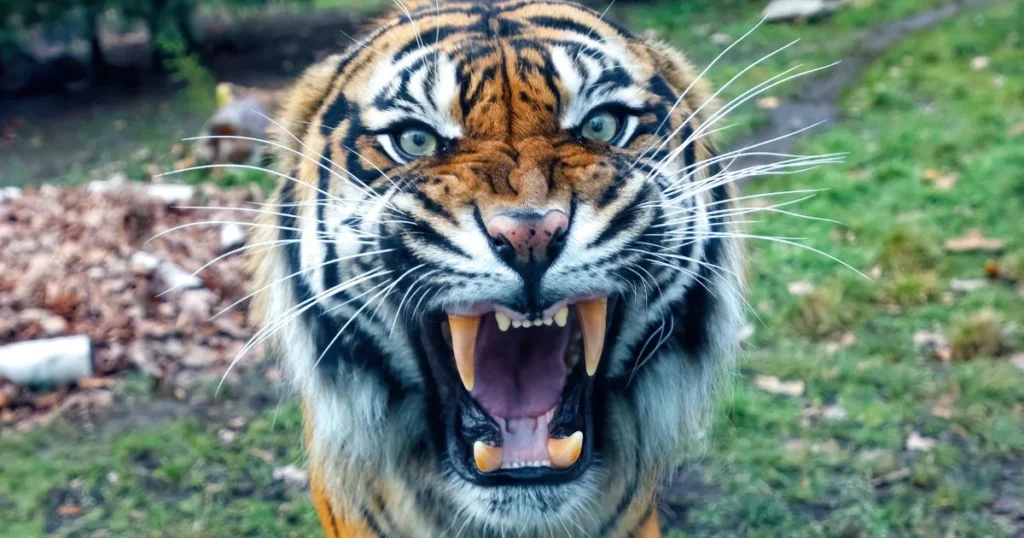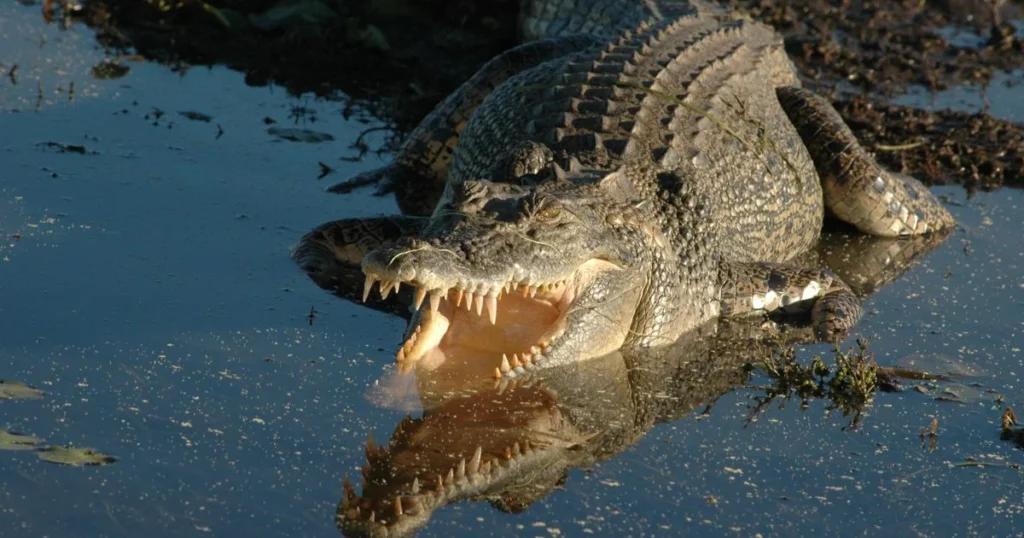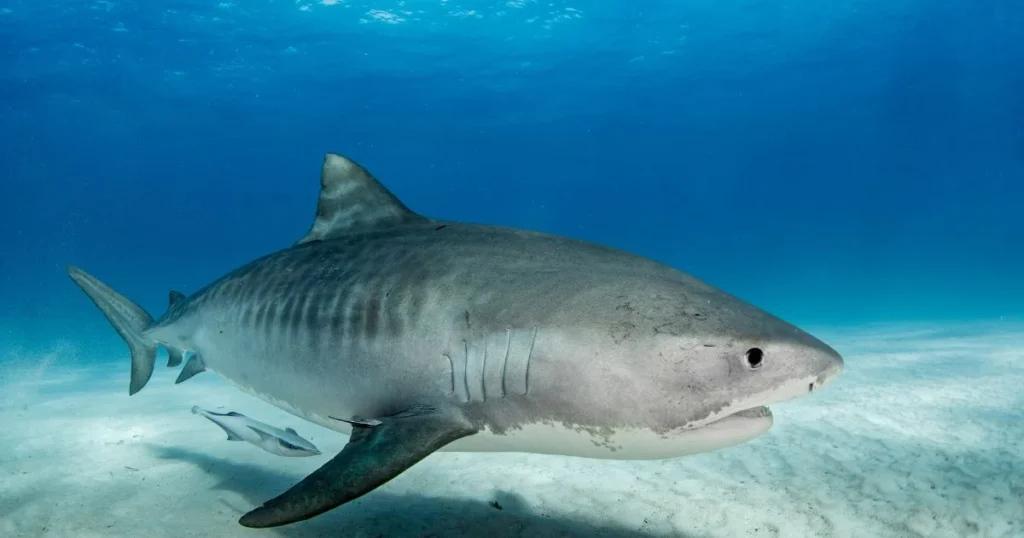
Throughout history, humans have been both predators and prey in the natural world. While modern advancements in technology and society have significantly reduced the threats posed by wildlife, certain animals are known to actively hunt humans under specific conditions. Understanding these predators, their behaviors, and the circumstances under which they might attack can help in mitigating risks and ensuring safety.
Lions and tigers are among the most notorious predators that have been documented to hunt humans. In regions like the Sundarbans in India and Bangladesh, the Bengal tiger has developed a reputation for man-eating behavior. Factors such as habitat loss, scarcity of natural prey, and human encroachment into their territories can drive these big cats to consider humans as potential prey.
Lions: Known as the "king of the jungle," lions typically hunt in prides and prefer large herbivores like zebras and wildebeests. However, in certain parts of Africa, instances of lion attacks on humans have been recorded, especially in areas where their natural prey is depleted.
Tigers: The largest of the big cats, tigers are solitary hunters. The Sundarbans mangrove forest is infamous for tiger attacks on humans, attributed to factors like tigers' natural habitat being disrupted and the high density of human populations in these regions.

Crocodiles are responsible for more human fatalities annually than sharks. These ancient reptiles are highly territorial and often inhabit rivers, lakes, and coastal regions where they come into contact with humans.
Nile Crocodile: Found in Sub-Saharan Africa, the Nile crocodile is notorious for its aggressive nature and tendency to consider humans as prey. They are ambush predators, capable of launching sudden attacks from the water's edge.
Saltwater Crocodile: Inhabiting coastal areas of Southeast Asia, Australia, and the Indian subcontinent, the saltwater crocodile is the largest living reptile. Known for its opportunistic feeding habits, it can travel significant distances in search of food, making human encounters more likely.

While most bear species prefer berries, roots, and small animals, certain circumstances can lead to dangerous encounters with humans. Polar bears and grizzly bears are the most prominent bear species known to attack humans.
Polar Bears: These apex predators of the Arctic are known to hunt seals but have been known to attack humans when food is scarce. Climate change and melting ice caps have increased human-polar bear interactions, often with fatal outcomes.

Grizzly Bears: Found in North America, grizzly bears are typically not aggressive towards humans unless provoked or if they feel threatened. However, in regions where their habitat overlaps with human activities, encounters can sometimes lead to attacks.
Sharks have a fearsome reputation, though most species do not actively hunt humans. However, certain species, such as great white sharks, bull sharks, and tiger sharks, are more likely to be involved in unprovoked attacks on humans.
Great White Shark: Known for its size and power, the great white shark is often depicted as a man-eater. While attacks are rare, they can occur in areas where humans engage in water activities like surfing and diving.
Bull Shark: This species is notorious for its aggressive behavior and ability to inhabit both saltwater and freshwater environments, increasing the likelihood of human encounters.
Tiger Shark: Known for its less discriminating palate, the tiger shark is more likely to attack humans, especially in tropical and subtropical waters where they are commonly found.

Wolves and wild dogs (such as African wild dogs) are known to hunt in packs, and under certain conditions, they may pose a threat to humans.
Wolves: Historically, wolves have been feared as dangerous predators, though attacks on humans are extremely rare today. In some regions where their prey is scarce, wolves might consider attacking humans.

African Wild Dogs: These highly social and cooperative hunters are rarely known to attack humans. However, in areas where their natural habitat is disrupted, the possibility exists.
Human encroachment into wildlife habitats, climate change, and the depletion of natural prey are significant factors that contribute to the instances of animals hunting humans. In many cases, these encounters are driven by desperation rather than natural predatory behavior. Conservation efforts and sustainable practices are essential to mitigate these conflicts and ensure the coexistence of humans and wildlife.
The belief that a dog will become a habitual attacker after tasting human blood is a myth. While a dog might become more aggressive if it has previously attacked, this behavior is typically linked to underlying issues such as fear, trauma, or poor training rather than the mere act of tasting blood. Responsible pet ownership, proper training, and addressing behavioral issues are crucial in preventing dog attacks.
While the species mentioned above have been known to attack and sometimes hunt humans, it is crucial to understand that these incidents are relatively rare. Most wildlife prefers to avoid human contact, and attacks often occur due to specific circumstances such as habitat encroachment, scarcity of food, or defensive behavior. So, to summarize, it is rare to find animals that actively hunt humans, but is common, according to different situations, to find animals that can attack humans to protect themself.
Understanding the behaviors and triggers that lead certain animals to hunt humans is essential for preventing and mitigating these dangerous encounters. It’s rare to find animals that see humans as food, so respecting wildlife habitats, promoting conservation efforts, and educating the public on safe practices can significantly reduce the risk of attacks. By fostering a deeper understanding of these predators, we can coexist more harmoniously with the natural world.
If you want to discover more amazing facts about wildlife, go to our blog at www.critterstop.blog. Our Team at Critter Stop has created a lot of interesting information to help you better understand our wild neighbors. If you need assistance with wildlife removal in Dallas, give us a call at (214) 234-2616 for a free inspection.
Visit our Critter Library and learn more about our furry friends